How To Fix “Your System Has Run Out Of Application Memory” Mac Error
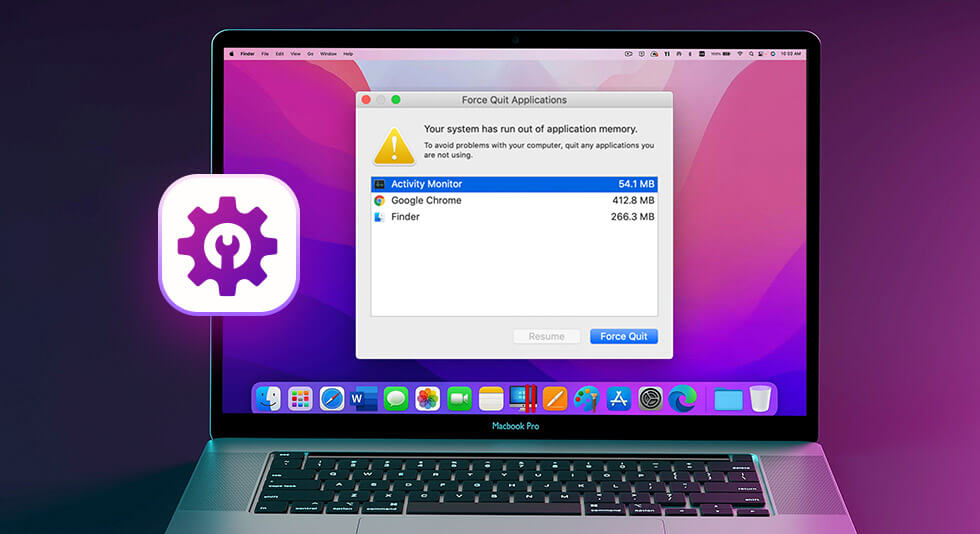
While macOS is known for its stability and reliability, occasional errors or issues may still occur due to various factors, such as software bugs, hardware failures, conflicts with third-party applications, or user errors. And encountering the “Your system has run out of application memory” is one such issue.
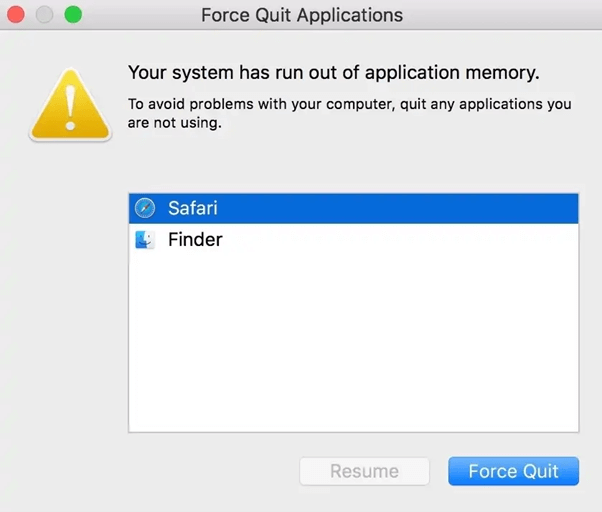
In this post, we will be learning all about this error message, what causes it, and what potential workarounds you can try to get rid of this error.
Let’s dive in!
Also read: How to Fix “Your Connection is Not Private” Error on Mac
What is the ‘Your System Has Run Out Of Application Memory’ Error on Mac?
The “System has run out of application memory” error on a Mac is a message that appears when the macOS operating system determines that there is insufficient available RAM (Random Access Memory) to handle the needs of the currently running applications. This error typically occurs when multiple resource-intensive applications or processes run simultaneously, and your Mac does not have enough free RAM to accommodate their demands.
When your Mac runs out of available RAM, it may struggle to perform tasks, and you may experience slowdowns or freezing in applications. In some cases, macOS may automatically close or terminate certain applications to free up memory, and you may see the “system run out of application memory” error message as a notification.
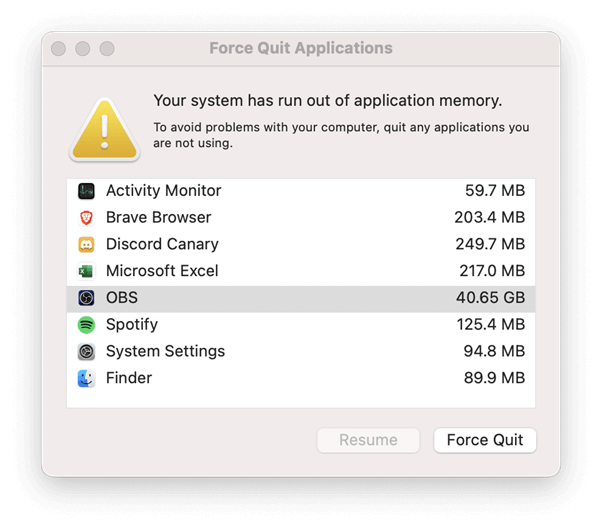
This error can be caused by various factors, including running multiple large applications simultaneously, having too many background processes running, running applications with memory leaks, or having insufficient RAM installed on your Mac.
How to Fix the Run Out of Application Memory Error on macOS?
To resolve the “Your system has run out of application memory” error on a Mac, you can try the below-listed solutions.
Solution 1: Restart your Device
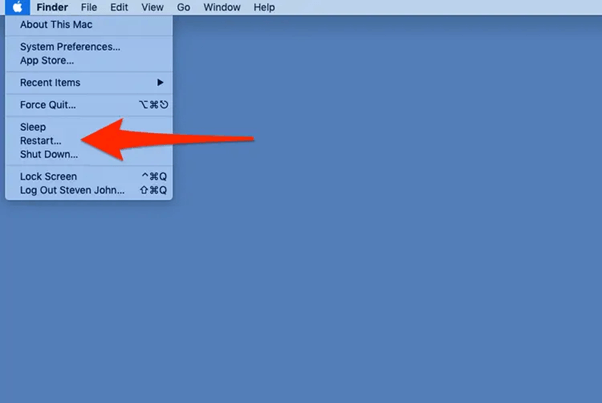
Restarting your Mac is often the first step you should try when encountering errors on macOS. Restarting your device clears the cache and other temporary files, which can help free up disk space used as virtual memory. To restart your Mac, simply go to the Apple menu in the top left corner of the screen, and click on Restart. This simple action can often resolve temporary issues and restore everyday system functioning.
Also read: How to Fix “Macbook Keyboard not Working” Issue on Mac
Solution 2: Update the macOS
When you encounter issues with your Mac, it’s always worth checking for updates. Sometimes, the problem could be due to a known bug addressed in a software update. Apple regularly releases updates for macOS to improve stability, fix bugs, and enhance performance.
To check for updates on your Mac, follow these steps:
- Click on the Apple menu located in the top left corner of your screen.
- Choose ‘About This Mac’ and then click on ‘More Info’. This will open the System Information window.
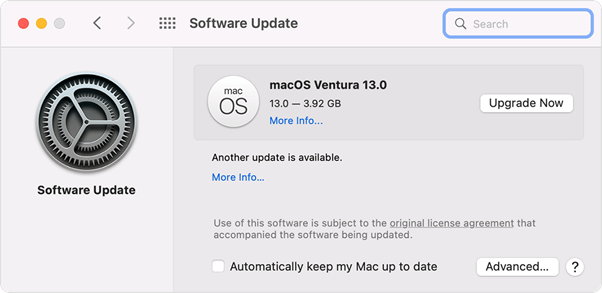
- In the System Information window, select ‘Software’ from the left-hand side menu.
- Click on ‘Software Update’ in the right-hand pane.
If an update is available, you will see it listed in the Software Update window. Follow the on-screen instructions to install the update. It’s important to keep your Mac up to date with the latest software updates to ensure optimal performance and address any known issues.
Also read: How To Flush DNS Cache on Mac
Solution 3: Free Up Storage Space
Managing storage space on your Mac is crucial for maintaining smooth performance and preventing storage-related issues. macOS provides a built-in feature called Storage Management that helps you identify and clear up space-consuming files and optimize your storage. Here’s how you can use Storage Management to free up storage space on your Mac:
- Open the Apple menu in the top left corner of your screen and select “About This Mac”.
- In the “About This Mac” window, click on the “Storage” tab.
- Click on the “Manage” button. This will open the Storage Management window, which provides an overview of your storage usage.
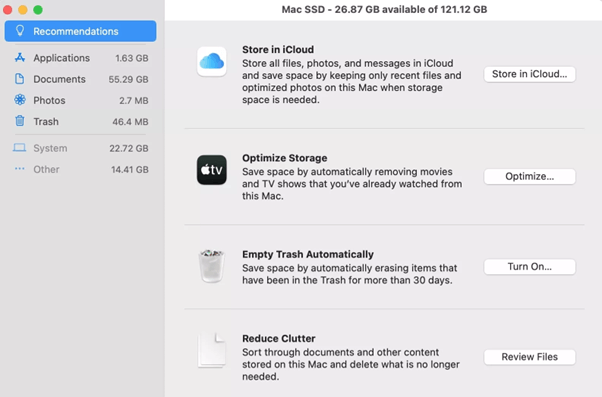
- In the Storage Management window, you’ll see a visual representation of your storage usage.
Review the recommendations offered by Apple in the Storage Management section. Free up some storage space on your device to check if it helps in resolving the “Your system has run out of application memory” error.
Also read: How To Fix Macbook Stuck on Loading Screen?
Solution 4: Force Quit Applications
Did you know that keeping apps running in the background on your Mac can consume a significant amount of virtual memory, potentially impacting your system’s performance? It’s a good practice to quit apps when you’re not using them to free up system resources and optimize your Mac’s performance.
- Press Option-Command-Esc simultaneously, or go to the Apple menu in the top left corner of your screen and choose “Force Quit” from the drop-down menu.
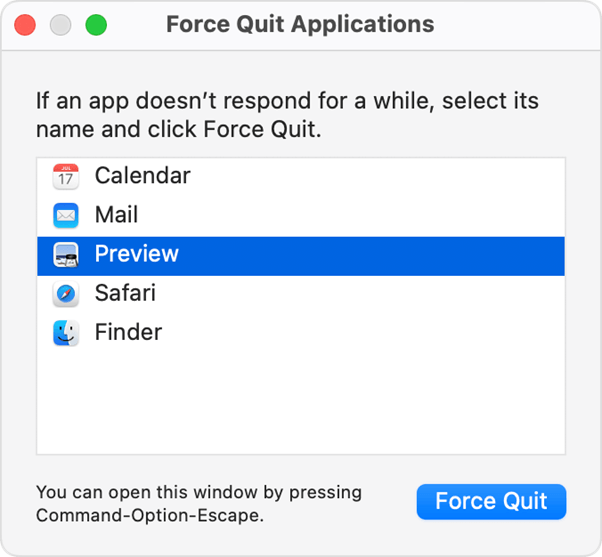
- The Force Quit window will open, displaying a list of all the apps currently running on your Mac. Select the apps that you’re not currently using or that you want to close, and click on the “Force Quit” button.
Solution 5: Update Apps
Sometimes, when running multiple applications on your Mac, one or more of them may have a bug that causes them to consume excessive memory, leading to performance issues. Checking for updates for your apps can help resolve such issues. Here’s how you can do it:
- Open the App Store on your Mac from Launchpad, Dock, or the Applications folder.
- In the App Store, click on the “Updates” tab located at the top of the window.
- If any updates are available for the apps installed on your Mac, you will see them listed in the Updates tab.
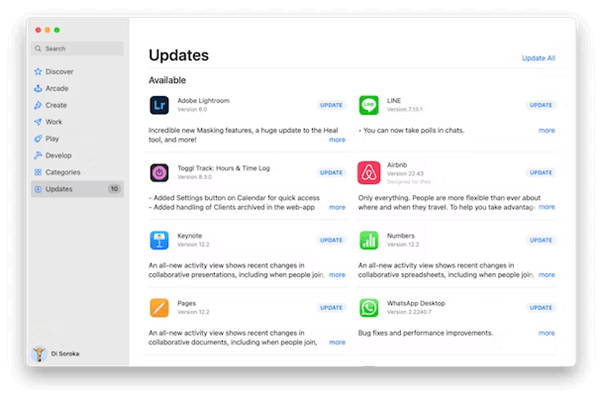
- Click on the “Update” button next to the individual apps with updates available, or click on “Update All” to update all the apps at once.
Solution 6: Close the Browser Tabs
Web browsing has become an integral part of our daily routine, and it’s easy to find ourselves drowning in a sea of open tabs in our web browsers. However, having too many tabs open can significantly impact the performance of your Mac, as they consume valuable system resources like memory and CPU power.
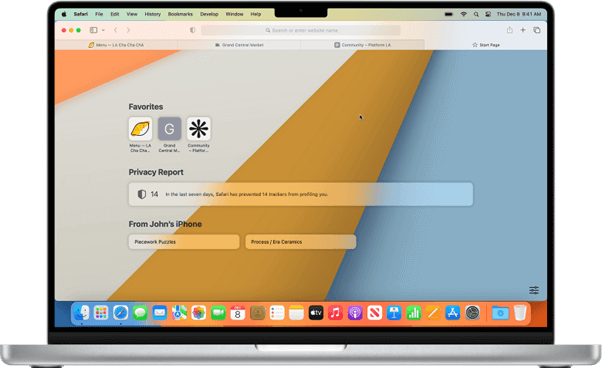
To ensure smooth performance on your Mac, it’s good practice to limit the number of open tabs and close those you no longer need.
Conclusion
Encountering the “Your System Has Run Out Of Application Memory” error on your Mac can be frustrating, but fortunately, there are several ways to resolve it. By following the steps outlined in this blog, you can effectively troubleshoot and fix this error.
Remember to regularly check for software updates, close unused apps and tabs, and be mindful of your storage usage to ensure the smooth and efficient operation of your Mac. By implementing these tips and tricks, you can resolve the “Your System Has Run Out Of Application Memory” error and enjoy a seamless computing experience on your Mac.
We hope this blog has provided you with helpful insights and solutions to fix this common Mac error. Was this post helpful? Feel free to share your thoughts in the comments section!

 How to Recover Data from External Hard Drive on Mac?
How to Recover Data from External Hard Drive on Mac? MacBook Pro Touch Bar Not Working? Here’s How to Fix It
MacBook Pro Touch Bar Not Working? Here’s How to Fix It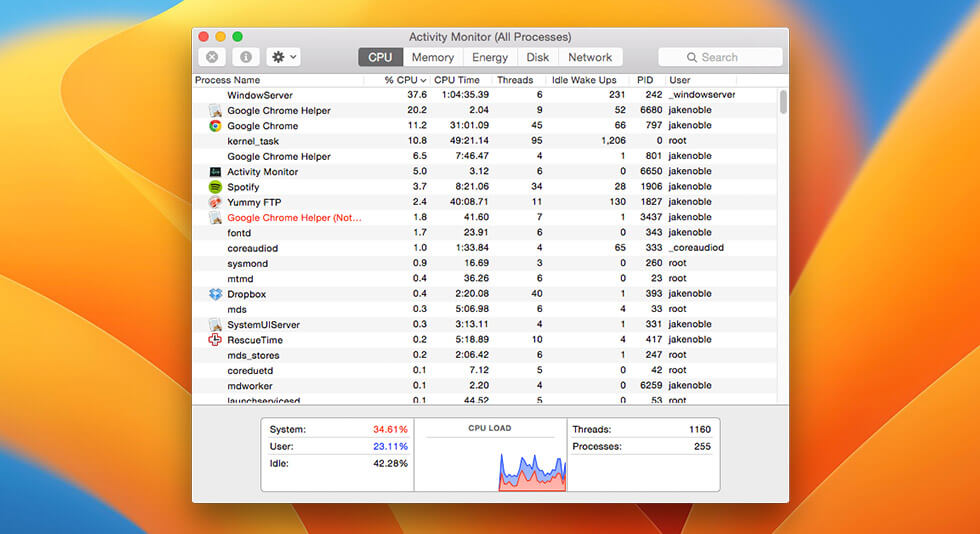 How to Fix WindowServer High CPU Usage on Mac
How to Fix WindowServer High CPU Usage on Mac